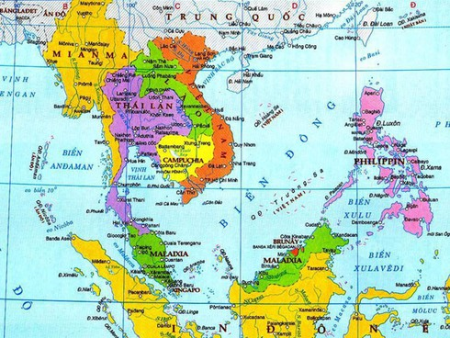Overlapping sea is a maritime zone where two or many states make legal claims under international law, including the 1982 United Nations Convention on the Law of the Sea. An overlapping sea is often located in the area where the coasts of two countries are opposite or adjacent to each other, but the distance between the two coasts are not sufficient for the two sides to establish the maximum breadth of their waters without overlapping each other. The distance between the coasts of the two states which are opposite or adjacent to each other provides a basis for delimiting the overlapping internal waters, territorial sea, exclusive economic zone, and continental shelf. As the exclusive economic zone and continental shelf are often broader, an overlapping sea will be more likely to be formed within those areas. An overlap that has not been negotiated and delimited by relevant parties will be considered as a maritime boundary dispute between coastal countries. This type of dispute derives from the interpretation and application of the 1982 United Nations Convention on the Law of the Sea. This is a type of dispute which has been developed amidst the trend of revolutionary geo-political and geo-economic changes on a global scale.
 |
| The map of Southeast Asia and East Sea |
At present, about 36% of the total area of seas and oceans has been placed under coastal countries’ sovereignty, sovereign rights, and jurisdiction since the inception of the 1982 United Nations Convention on the Law of the Sea. There are about 416 disputes over maritime boundaries and continental shelves that should be settled. In Southeast Asia, there are about 15 maritime disputes. Certainly, disputes provoked by groundless claims or the deliberate misinterpretation of the 1982 United Nations Convention on the Law of the Sea are unrecognised. According to this Convention, if no agreement can be reached, states “shall make every effort to enter into provisional arrangements of a practical nature and, during this transitional period, not to jeopardise or hamper the reaching of the final agreement.”
As for our country, the delimitation of maritime boundaries with China and Thailand is basically stable. However, Vietnam’s maritime delimitation with several regional countries is still complex and necessitates persistent negotiation and long-term solutions. Our country has maritime zones that overlap its neighbours’ seas. We have signed an Agreement on historical waters with Cambodia and the delimitation of territorial sea, exclusive economic zone and continental shelf between the two sides continues to be handled. Vietnam and Malaysia share an overlapping sea within the Gulf of Thailand (the continental shelf extends up to the distance of 200 nautical miles) and the two countries have reached an agreement on joint exploitation of natural resources in the area of overlapping claims. Vietnam and Indonesia have signed an Agreement on delimitation of continental shelf and the two sides are negotiating about the exclusive economic zone.
In conclusion, to delimit maritime boundaries and reduce overlapping claims, relevant countries must devote more effort to negotiation on the basis of the 1982 United Nations Convention on the Law of the Sea. If parties have not reached any agreement on maritime boundaries yet, they should work towards a solution for the joint exploitation of overlapping seas and avoid causing unilateral disputes for the sake of national political and economic benefits, going against international law or negatively impacting on maritime security and safety as well as regional peace and stability.
Nguyen Duc Phu